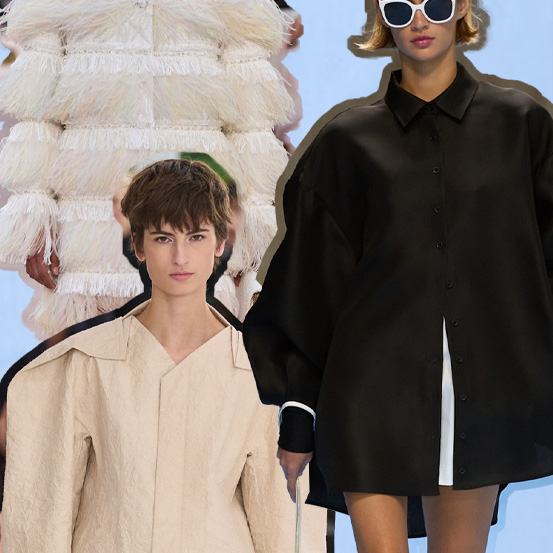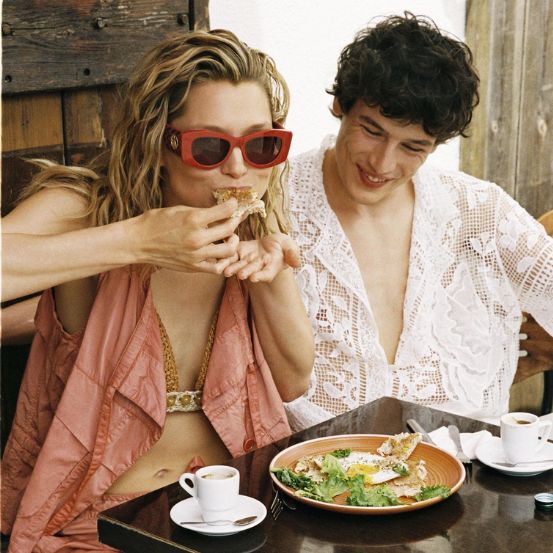December 2024
Is it time to slow down the beauty industry?
Fast fashion has long been in the spotlight as one of the most criticized facets of the fashion industry, called out for its unsustainable practices, ethical shortcomings, and environmental toll. But could it be that, right under our noses, the beauty industry has quietly followed the same path? Have we overlooked how beauty, once rooted in artistry and care, has adopted the rapid production cycles and consumer pressures of its fashion counterpart?
The parallels are striking. Fast fashion is condemned for its relentless pace and the implications that come with it—ethical exploitation, environmental degradation, and an insatiable demand for more. Is it time we ask whether the beauty industry has reached a similar tipping point? Fast fashion operates on a simple premise: speed and volume. Collections are churned out not seasonally, but weekly—sometimes even quicker—flooding the market with new trends at breakneck speed. The allure of affordability and instant gratification masks its darker side: garment workers earning pennies for their labor, overflowing landfills of unsold or discarded clothing, and the staggering environmental cost of production. This model thrives on overconsumption, feeding a cycle where trends are fleeting, and what’s “in” today is obsolete tomorrow. It’s a system built to satisfy our insatiable hunger for the new, often at the expense of quality, sustainability, and humanity. The cultural and environmental critiques of fast fashion have been loud and persistent. Documentaries and campaigns have pulled back the curtain, urging consumers to reconsider their habits and calling on brands to slow down. Terms like “slow fashion” and “circular design” have entered the dictionary as antidotes to a system that has proven unsustainable.
But while fashion faced its reckoning, could it be that beauty quietly slipped into the same pattern? Now more than ever, beauty trends shift at a dizzying pace. New styles, looks, and whimsically drink-inspired names bloom seemingly overnight. The result? A culture of overconsumption, where products go viral within moments of their launch. Brands—especially celebrity-fronted ones—capitalize on this frenzy with limited-edition drops of their hero products, creating an almost unbearable sense of urgency to buy. Others dive headfirst into entirely new subcategories, not out of necessity but in an effort to expand their offerings and claim a larger share of the ever-growing market. This cues in the concept of the illusion of necessity. With all these new trends, launches, limited edition products, and special collections, the beauty industry has made itself a goldmine that thrives on the idea we need more—more shades, more products, more options, etc. Whilst having a well-stocked, versatile beauty cabinet is at the top of the list of beauty lovers everywhere, one can also argue, how many lipsticks does one really need? Or foundations, for that matter?
While having a variety of products is certainly fun, can we really justify owning six or eight different lipsticks or three foundations, especially when a handful of staples would do the job just as well? In a time when minimalist lifestyles are gaining traction, beauty seems to resist the notion of “less is more,” offering endless choices that often feel unnecessary rather than empowering. This brings us to the concept of the infinite beauty bag—the idea that there’s always room for a new product, as long as it justifies a place in your routine. This myth has grown into a sort of urban legend in beauty circles, justifying everything from extra blushes to multiple foundations. But how often are we truly buying with purpose? Can we really justify owning two or three foundations, each serving a “different purpose” or filling a “different need,” or is it simply our desires, curated by a system that preys on the constant craving for the next thing?
In this culture, need and desire blur into one, creating a space where beauty is about choice, but often at the expense of necessity. As consumers, we’re left to navigate whether we are indulging in the allure of variety or truly building a collection of products that elevate our routine. The question remains: When do we draw the line between filling our beauty bag with products that genuinely enhance our lives, and accumulating more just for the sake of it? To further understand the lack of logic behind this overconsumption, we must look at the other subcategories of beauty that mirror the fast-fashion mentality. In beauty, unlike fashion, the full value of a product doesn’t reveal itself overnight. Skincare, for instance, requires time—there are no instant fixes, and results often take weeks, if not months, to truly show. Similarly, perfumes are designed to linger, lasting far longer than a fleeting moment, yet we’re quick to move on to the next scent before giving the last one a chance to settle.
The rush for constant new launches seems entirely out of sync with the fundamental idea that beauty should be about lasting quality and thoughtful investment. With skincare needing time to work its magic, the culture of instant gratification in beauty seems almost counterintuitive. The frenzy for the “new” often leaves us blind to the value of what we already have, furthering a cycle of consumption that prioritizes novelty over the nurturing of what we’ve already invested in. Once again, while having a “scent wardrobe” or a well-curated beauty collection may be aspirational, when does ‘collection’ become ‘obsession’? Is the pursuit of variety truly enhancing our experience, or is it simply feeding an endless craving for more?
To complete the trifecta, one must also examine the roots of these so-called “needs” and look at the puppeteer behind the curtains: trends. In recent years, there has been a profound shift in how beauty trends are born and who dictates their rise. This can only be described as the democratization of trends, where the power dynamic has flipped. No longer are trends solely birthed from editors’ desks or high-fashion runways; today, they are often shaped by the very people who consume the products—the beauty fanatics, makeup enthusiasts, and anyone with a connection to the internet and a TikTok account. We’ve witnessed the shift from an era where consumers were bound to blindly follow what editors declared trendy and ‘in’, to a reality where editors are now scrambling to catch up with the trends circulating online. The speed at which trends evolve has accelerated, largely due to the hyper-connectivity of social media. Rather than simply defining trends, beauty editors are now in the position of reacting to them, reporting on what’s already bubbling up from the grassroots level of beauty culture. This inversion of power begs the question: are we shaping the beauty industry, or is the industry shaping us?
Regardless of the crisis-inducing questions, the answer that remains above all lies in response to the core prerogative: is the beauty industry going too fast? Yes. It is. Truth be told, everything is moving at an unsustainable pace, and it’s up to each one of us to pump the brakes, step back, and find a new velocity—one that honors quality over quantity, experience over instant gratification. Only by recalibrating our relationship with beauty can we truly embrace what it’s meant to be: a thoughtful, evolving ritual, not a frenzied race to the next best thing. In the end, the beauty industry is a mirror of society itself—a reflection of our desires, obsessions, and anxieties. But just as trends ebb and flow, so too can our approach to beauty. With every new product, every fleeting trend, we are reminded of how much we’ve bought into a culture of consumption, always chasing the next thing. Yet, what if we’re overlooking something far more valuable? The true essence of beauty isn’t found in the constant accumulation of products, but in the intentional rituals that nourish our minds, bodies, and spirits.
We now stand at a crossroads, not just in beauty, but in how we engage with the world around us. The pace at which we move through life—constantly bombarded with newness, urgency, and the need for more—has left us disconnected from the very essence of what beauty is meant to be: a slow, transformative process. The question we must ask ourselves is this: do we continue to chase what’s next, or do we pause, reset, and embrace beauty at a pace that truly honors it? The pace of the beauty industry mirrors the frenetic rhythm of the world around us—a cycle of endless motion, always looking forward, rarely pausing to reflect. But beauty, in its truest form, was never meant to be a race. It thrives in the stillness of a morning ritual, in the slow unveiling of skincare’s quiet magic, and in the lingering embrace of a scent that becomes part of who we are.
Perhaps the question isn’t just whether the beauty industry is going too fast but what we lose when we try to keep up. In chasing the next launch, the next trend, the next fleeting moment of satisfaction, do we risk losing sight of what made us fall in love with beauty in the first place? The ritual, the artistry, the transformation—it all gets blurred in the rush for more. To slow down is to resist. To resist is to reclaim. And in that reclamation, we rediscover beauty’s most enduring promise: not in its capacity to change us, but in its power to connect us—to ourselves, to our stories, and to the quiet joy of being enough just as we are.
Translated from the original in the What's Next Issue, published December 2024. Full credits and stories in the print issue.
Relacionados

.png)
Da MAC para o Mundo: tudo o que importa saber sobre as tendências de maquilhagem atuais
09 Apr 2025
.jpg)
.jpg)





.jpg)